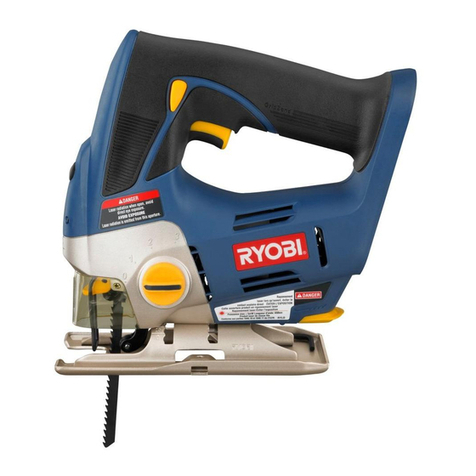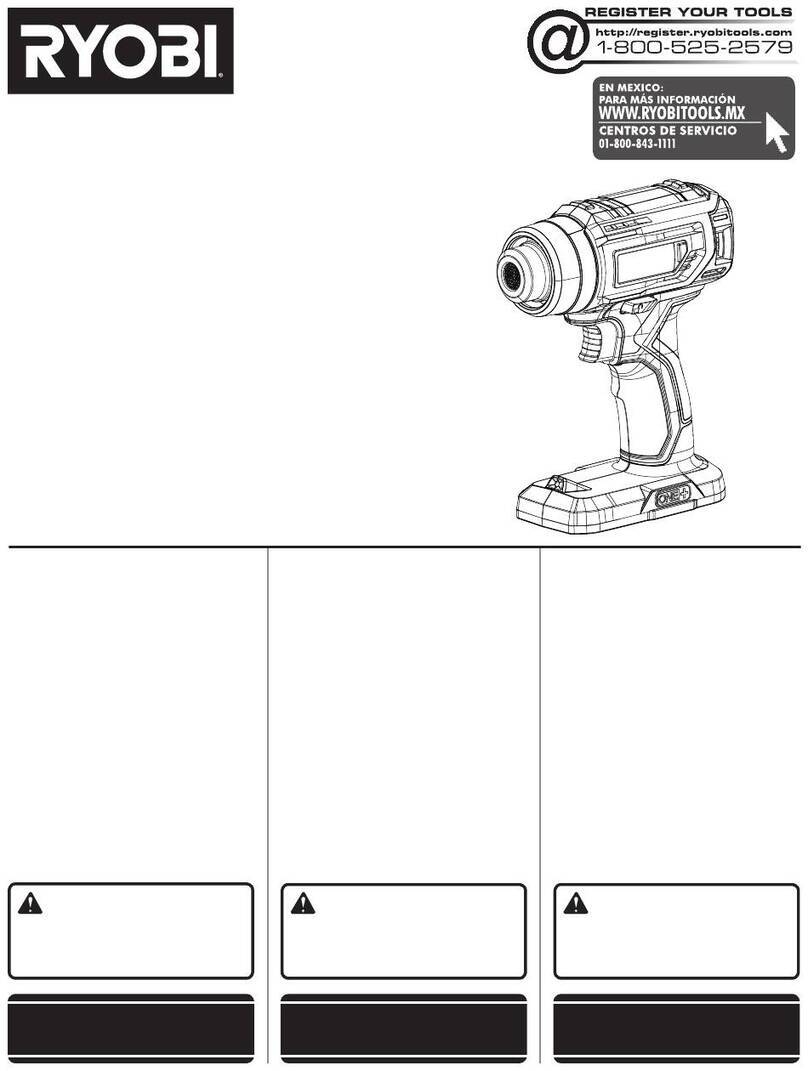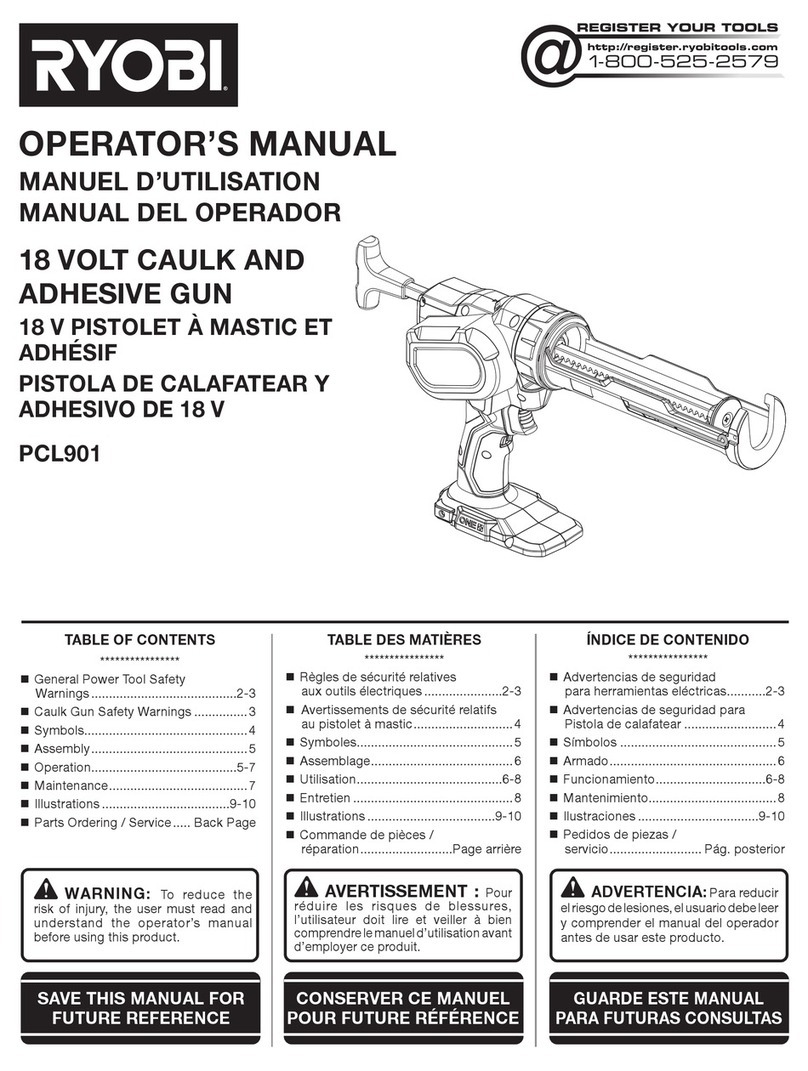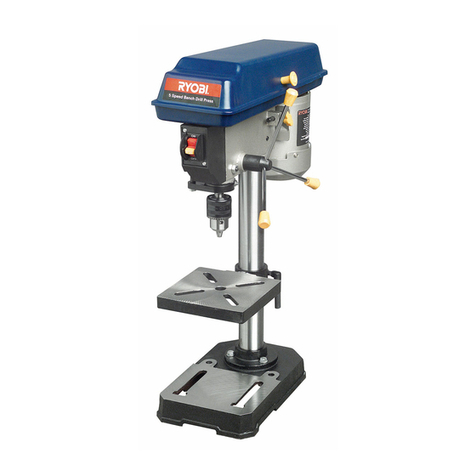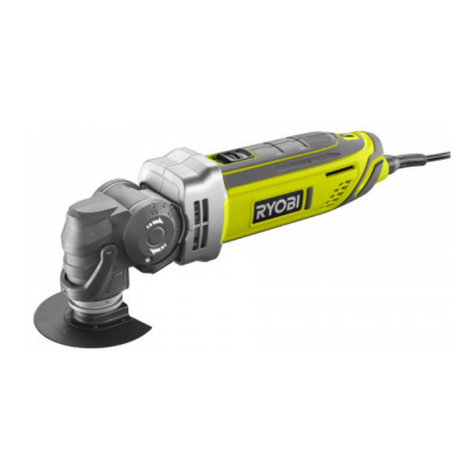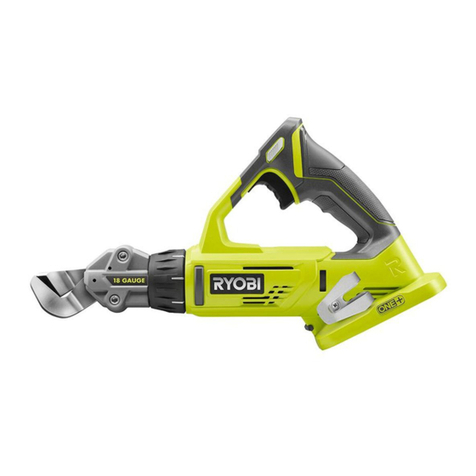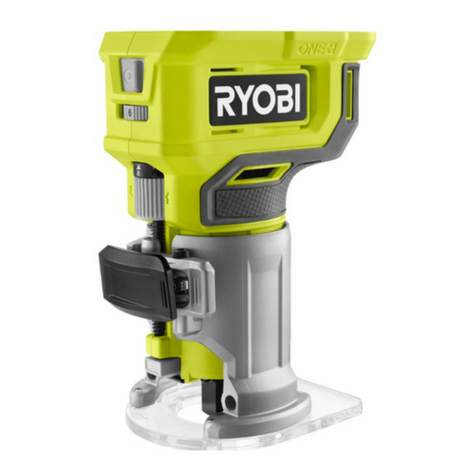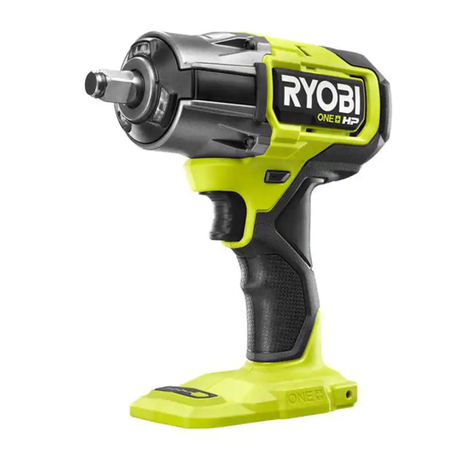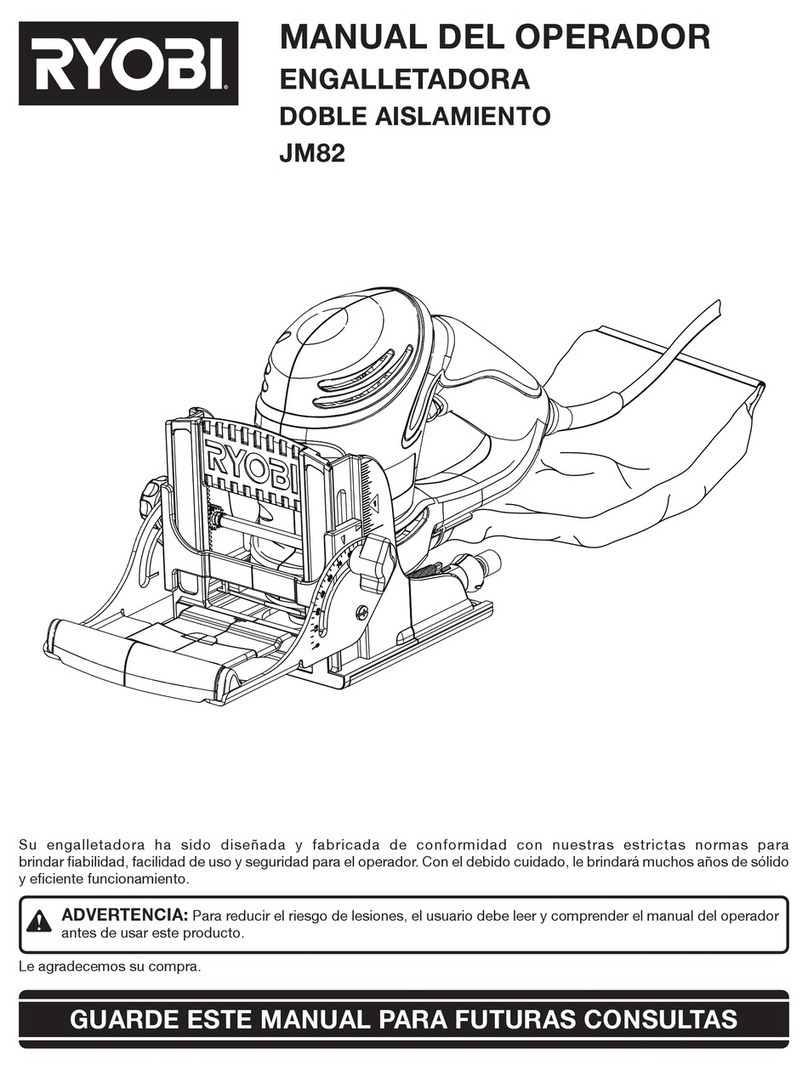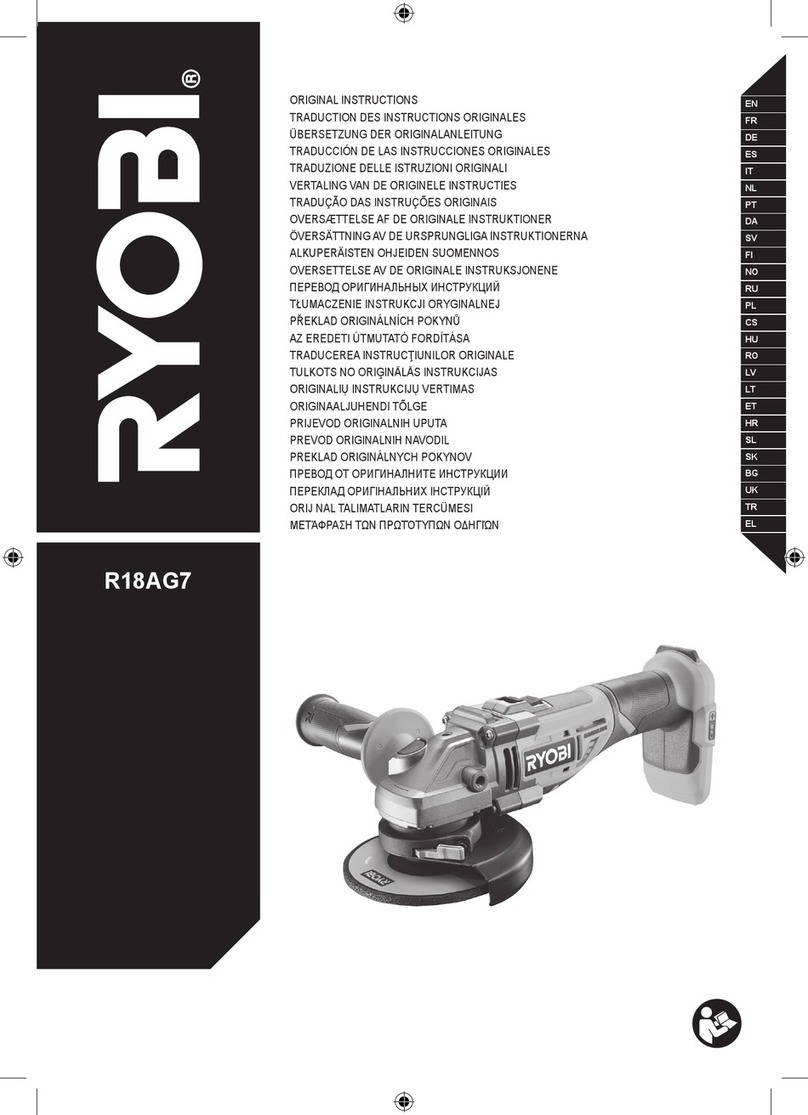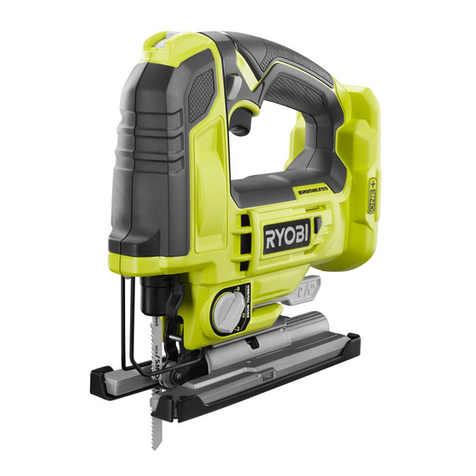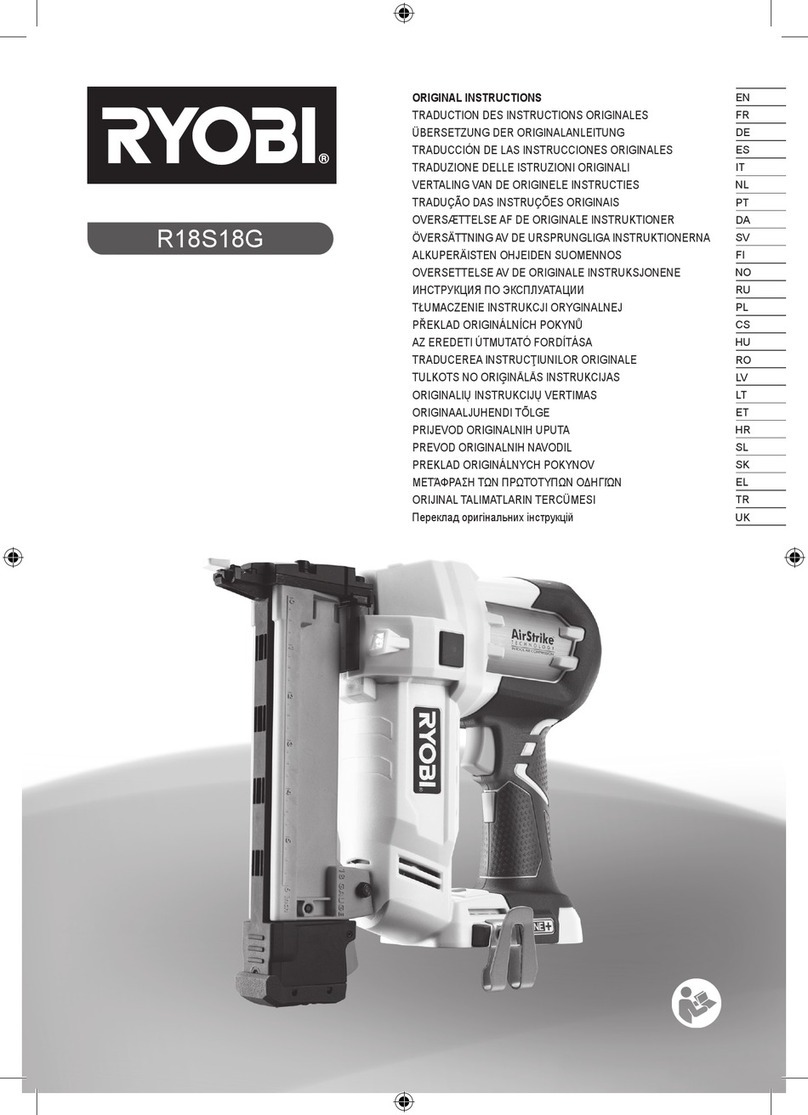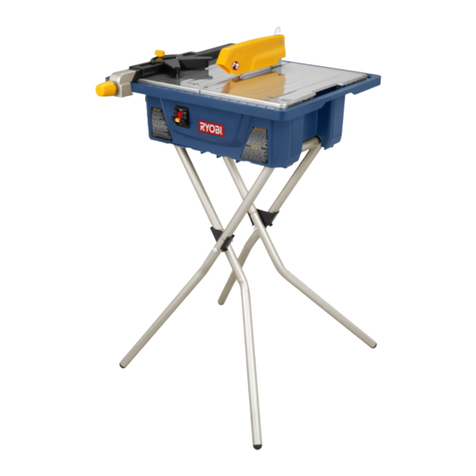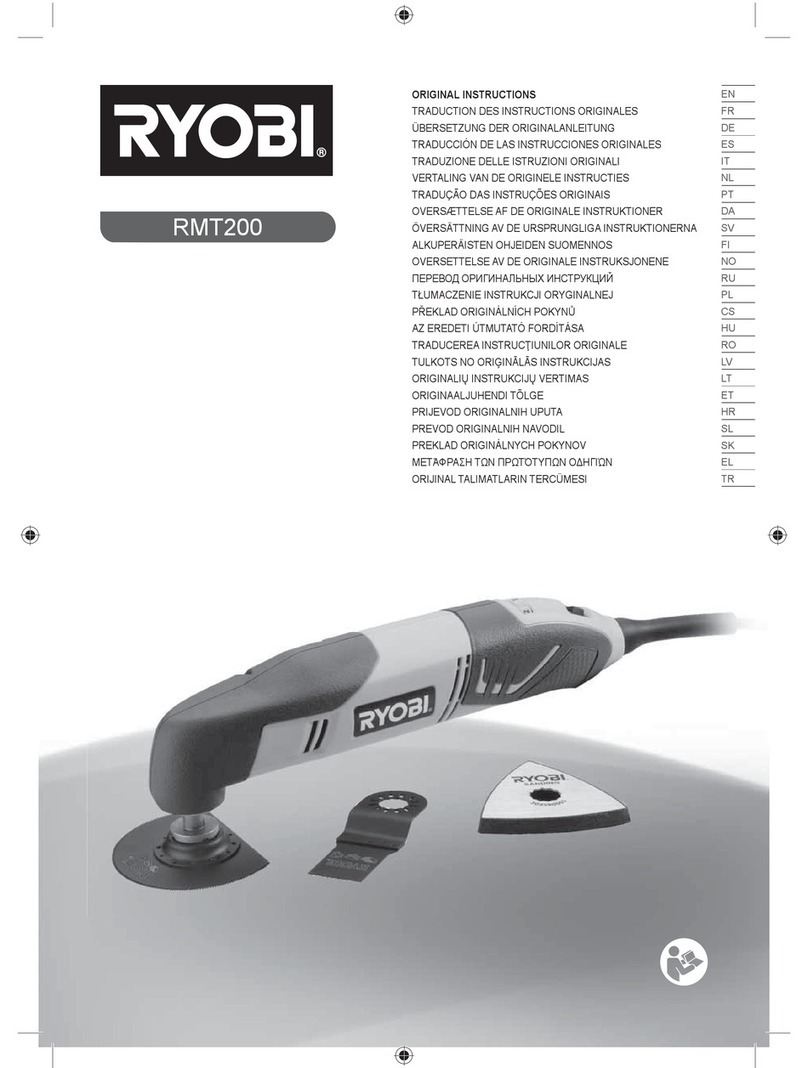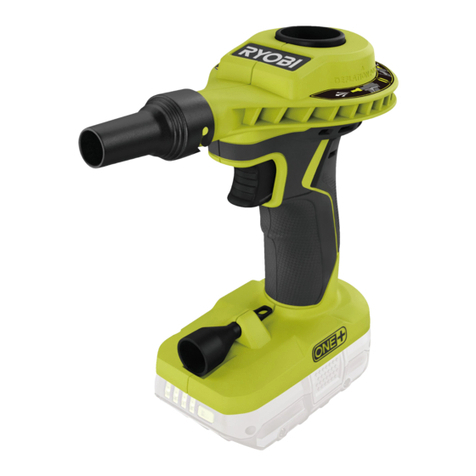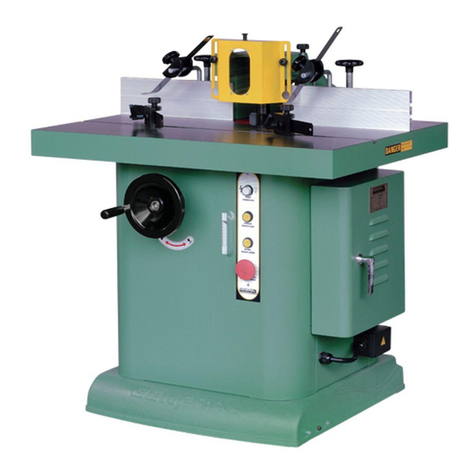
READ AND UNDERSTAND ALL
INSTRUCTIONS
1 . KNOW YOUR POWER TOOL. Safe operation of this
power tool requires that you read and understand
this operator's manual and all labels affixed to the
tool. Learn its applications and limitations as well
as the potential hazards.
A WARNING
When using electric tools, basic safety precautions
should always be followed to reduce the risk of fire,
electric shock, and personal injury. use common
sense. Some of these basic safety precautions
include the following:
SAFETY PRECAUTIONS
2. KEEP GUARDS lN PLACE and in good working
order.
3. REMOVE ADJUSTING KEYS AND WRENCHES.
Get in the habit of checking to see that hex keys
and adjusting wrenches are removed from the tool
before turning it on.
4. KEEP THE WORK AREA CLEAN. Cluttered work
areas and work benches invite accidents.
5. DO NOTUSE lN DANGEROUS EM/IRONMENTS. Do
not use power tools neargasoline or otherflammable
liquids, in damp or wet locations, or expose them to
raiin. Keep the work area well lighted.
6. KEEP CHILDREN AWAY FROM POWER TOOLS.
All visitors should be kept at a safe distance from the
work area.
7. MAKE THE WORKSHOP CHILDPROOF wih padlocks
and master switches or by removing starter keys.
8. DO NOT FORCE THE TOOL. lt will do the job better
and safer at the rate for which it was designed'
9. USE.THE RIGHT TOOL. Do not force the tool or
attachment to do a job for which it was not designed.
10. USE PROPER EXTENSION CORD. Make sureyour
extension cord is in good condition. When using an
extension cord, be sure to use one heavy enough to
carry the current your product will draw. A wire gage
13.
'14.
15.
16.
17.
11.
12.
18.
19.
23.
24.
size (A.W.G.) of at least 16 is recommended for
an extension cord 100' or less in length. A cord
exceeding 100' is not recommended.
WEAR PROPER APPAREL. Do not wear loose
clothing, gloves, neckties, rings, bracelets, orother
jewelry that could get caught in moving parts' Non-
slip footwear is recommended. Wear protective
covering over long hair.
ALWAYS WEAR SAFEW GLASSES WITH SIDE
SHIELDS. Everyday eyeglasses have only impact
resistant lenses; they are not safety glasses.
PROTECT YOUR LUNGS. Wear a face or dust
mask if the cutting operation is dusty.
PROTECT YOUR HEARING. Wear ear muffs or
plugs during periods of extended use.
SECURE THE WORK. Use clamps or a vise to hold
the work when practical. lt's safer than using your
hand and frees both hands to operate the tool.
DO NOT OVERREACH. Keep properfooting and
balance at alltimes.
MAINTAIN THE TOOLWITH CARE. Keep blades
sharp and clean for the best and safest
performance. Follow instructions for lubricating
and changing accessories.
DISCONNECT POWER TOOLS BEFORE
SERVICING or before changing accessories such
as blades, bits and cutters.
REDUCE THE RISK OF UNINTENTIONAL
STARTING. Make sure switch is in the OFF
position before plugging in the tool.
USE ONLY THE MANUFACTURER'S
RECOMMENDED ACCESSORIES. Consult this
operator's manual for recommended accessories.
Using improperaccessories may cause riskof injury.
NEVER STAND ON TOOL. Serious injury could
occur if the tool is tipped or if the blade is
unintentionally contacted.
PERIODICALLY CHECK FOR WORN OR
DAMAGED PARTS. Check for alignment of moving
parts, binding of moving parts, breakage of parts,
loose mounting brackets, and any other conditions
that may afiect operation. A guard or any other part
that is damaged should be properly repaired or
replaced. Before the tool is used again, make sure
that the repaired or replaced part is operating
properly and performing its intended function.
NEVER LEAVE TOOL RUNNING UNATTENDED.
Turn the power off. Do not leave tool until it comes
to a complete stoP.
DO NOT ABUSE CORD. Never yank the cord to
disconnect it fom the receptacle. Keep the cord from
heat, oil, and sharp edges. '
KEEP BITS CLEAN AND SHARP' Sharp bits
minimize stalling. Dirty and dull bits may cause
misalignment of the material and possible operator
injury.
20.
21.
22.
A WARNING
Do not connect your drill press to a power source
untilyou have assembled and adjusted the drill press
as described in this manual and have read and
understood all precautions and operating instructions
in the manual and printed on the tool.
25.
